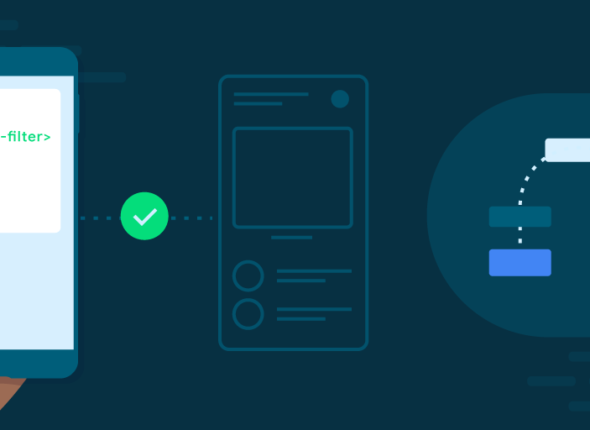Mitigating software vulnerabilities is crucial for your business continuity. Breaches and attacks by malicious agents can cost companies thousands or even millions of dollars on average, which could greatly impact business operations, as well as its finances.
Software vulnerabilities must be nipped at the bud before it causes damning damages. To effectively do this, you must first understand what these vulnerabilities are, how they come to be, and how to successfully address and prevent them.
WHAT IS A SOFTWARE VULNERABILITY?
A software vulnerability is a flaw, weakness, or defect in a software program or system that can be exploited by attackers to cause unintended behavior. This could include gaining unauthorized access to data, bypassing security measures, or disrupting normal operations. Vulnerabilities can arise due to coding errors, misconfigurations, or gaps in security controls.
Key Aspects:
- Security Risk: Vulnerabilities can lead to security breaches, allowing attackers to steal, modify, or delete data.
- Types of Vulnerabilities: These can include bugs in the code, weak passwords, unpatched software, and insecure configurations.
- Exploitation: Attackers exploit these vulnerabilities through various techniques, such as malware, phishing, or direct attacks on the system.
- Impact: The exploitation of a vulnerability can cause significant damage, including data loss, financial harm, or reputation damage to individuals or organizations.
- Mitigation: Regular software updates, patches, and security testing help reduce vulnerabilities and minimize the risk of exploitation.

How Vulnerabilities Get into Software
Software vulnerabilities can enter a system through various stages of development and use. Here are the key ways vulnerabilities find their way into software:
1. Coding Errors
- Bugs and Flaws: Mistakes in the programming code, such as improper input validation or memory management, can create vulnerabilities that attackers exploit.
- Buffer Overflows: One common error occurs when software doesn’t properly check the size of data, leading to buffer overflows that can crash programs or allow malicious code execution.
2. Unsecure Coding Practices
- Lack of Security Considerations: Developers sometimes fail to incorporate secure coding practices, leading to vulnerabilities like SQL injection, cross-site scripting (XSS), and insecure authentication mechanisms.
- Poor Error Handling: Not properly handling errors can leak sensitive information, making the software vulnerable to attacks.
3. Inadequate Testing
- Insufficient Security Testing: Skipping or limiting security tests, like penetration testing or static code analysis, allows vulnerabilities to go undetected before release.
- Missing Edge Case Testing: Failure to test how the software handles unexpected or extreme inputs can result in unforeseen vulnerabilities.
4. Third-Party Components
- Vulnerable Libraries: Using third-party libraries or open-source components without checking for security vulnerabilities can introduce risks.
- Outdated Dependencies: Failing to keep libraries and frameworks updated leaves the software exposed to known vulnerabilities.
5. Misconfigurations
- Default Settings: Leaving software with default settings or weak configurations (e.g., weak passwords, unused ports open) increases the chances of exploitation.
- Poor Permissions Management: Incorrect permissions for files or users can open security holes, allowing unauthorized access to critical areas.
6. Incomplete Patching
- Delayed or Missed Updates: Failing to apply security patches or updates leaves software vulnerable to exploits that have already been discovered and fixed in newer versions.
- Backward Compatibility Issues: Keeping old, vulnerable features or code intact for compatibility can unintentionally introduce security risks.
7. Human Factors
- Developer Oversight: Simple human errors like typos or oversight during development can lead to overlooked vulnerabilities.
- Lack of Awareness: If developers or teams aren’t trained in secure development practices, they may unknowingly create insecure code.
8. Design Flaws
- Weak Architecture: Poorly designed software architecture can make it difficult to implement strong security measures.
- Insufficient Encryption or Authentication: Failing to design secure mechanisms for data encryption, user authentication, or data transmission can open doors to attacks.
9. Complexity
- Large Codebases: As software grows in complexity, it becomes more difficult to detect and fix vulnerabilities, increasing the chances of security issues being overlooked.
- Feature Creep: Adding too many features without assessing their security implications can introduce new vulnerabilities.
10. Zero-Day Vulnerabilities
- Unknown Flaws: Some vulnerabilities may be unknown to both developers and security researchers when software is released. These are called zero-day vulnerabilities and can be exploited until they are discovered and patched.
By addressing these issues through secure coding practices, regular testing, and prompt updates, developers can significantly reduce the likelihood of vulnerabilities entering their software.
Creating apps is no less than creating art.
Learn no code app development with appbanao.
Benefits of choosing a trusted software development vendor
Choosing a trusted software development vendor offers several key benefits, which can significantly impact the success, efficiency, and quality of your project. Here’s why opting for a reliable and experienced partner matters:
1. High-Quality Deliverables
A reputable vendor follows industry best practices, adheres to high coding standards, and ensures thorough testing to deliver robust, error-free software. This results in fewer bugs, better performance, and long-lasting solutions.
2. Expertise and Experience
Trusted vendors bring a wealth of experience across different technologies and industries. Their team of skilled developers, designers, and project managers can offer innovative solutions, ensuring your project is both technically sound and aligned with current trends.
3. Cost Efficiency
Working with a reliable vendor helps avoid unexpected costs due to poor planning or mismanagement. They provide clear estimates and stay within the budget by optimizing resources and streamlining processes.
4. Timely Delivery
Experienced vendors use proven methodologies (e.g., Agile or Scrum) to ensure timely project completion. Their focus on deadlines helps meet business goals and minimizes delays that could negatively impact your launch or operations.
5. Access to Latest Technologies
Trusted vendors keep up with the latest technologies, tools, and frameworks. By working with them, your project benefits from modern solutions, ensuring better scalability, security, and performance.
6. Scalability
Whether your business grows or your needs change, a reliable software development partner can scale the solution to accommodate evolving requirements. Their experience in building scalable architectures ensures that your software can handle increased workloads.
7. Post-Development Support and Maintenance
A trustworthy vendor offers ongoing support after the project is completed, providing timely updates, bug fixes, and enhancements to ensure your software remains efficient and secure over time.
8. Clear Communication
Established vendors maintain transparency through regular updates, clear documentation, and open communication channels. This ensures you’re always informed about the project’s progress and can quickly address any concerns.
9. Risk Mitigation
Trusted vendors have strategies in place to identify and manage risks throughout the development cycle. Their knowledge of common challenges allows them to proactively resolve issues before they become major problems.
10. Compliance with Standards and Regulations
A reputable vendor ensures that the software adheres to relevant industry regulations and standards, whether it’s data security, privacy, or compliance with specific laws like GDPR or HIPAA, minimizing legal risks.
11. Customization and Flexibility
A reliable vendor offers tailored solutions that fit your specific needs, ensuring the software aligns with your business objectives. Their flexible approach allows for custom features, integrations, and adjustments throughout the development process.
12. Long-Term Partnership
Choosing a trustworthy vendor fosters a long-term relationship, leading to better collaboration on future projects. As they become more familiar with your business, they can provide ongoing improvements and insights to enhance your software and business strategy.
Conclusion
Selecting a trusted software development vendor is a critical decision that can significantly enhance the success of your project. From delivering high-quality solutions and on-time delivery to providing post-launch support and risk management, a reliable vendor ensures smooth execution and long-term benefits for your business.

Tips for Reducing App Load Time and Memory Usage
In today’s fast-paced digital world, users expect mobile apps to perform flawlessly, load quickly, and...
- October 17, 2024
- Com 0




